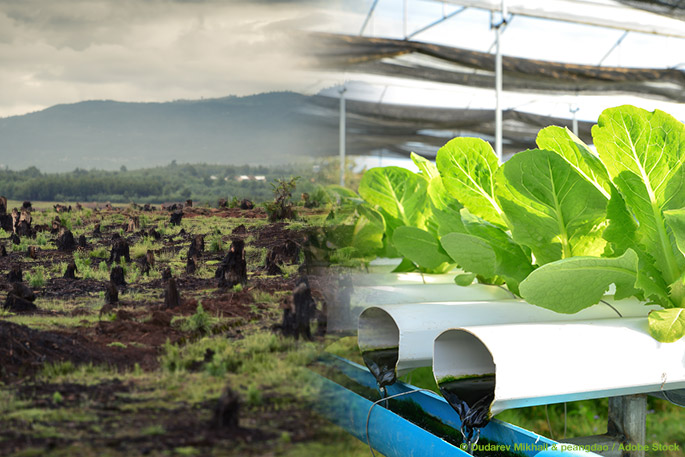The human population has spiked in the last hundred years, exceeding 7.5 billion people, and is on course to multiply and grow even more. The big question being thrown around is whether or not there will be enough food. Already agriculture has taken up 40% of Earth’s landmass and accounts for 70% of the freshwater used. Unfortunately, many irrigation systems that are used in farming are only 30% to 40% effective. Furthermore, farmers continue to reuse the soil which has led to soil depletion and loss of topsoil. Every 3 cm of topsoil takes about a thousand years for Mother Nature to recreate. People are running out of room for agriculture and are beginning to cut down vast amounts of trees and plants to make way for new farms. Every two years, forests the size of England are being cut down to make room for crops.
Enough depressing news, scientists and farmers have come together to create new and innovating ways of agriculture to contradict these problems. One solution is a type of farming called aquaponics. Aquaponics is a hybrid of aquaculture and hydroponics. Aquaculture is the practice of breeding and raising fish, and hydroponics is the art of growing crops without soil. In short, an aquaponics system is a miniaturized version of an ecosystem. The ammonia from the fish’s waste is converted by bacteria into nitrates and nutrients for the plants. The plants return the favor by filtering the water, keeping the water clean and healthy for the fish. Another upside to an aquaponic system is that it can grow 10x more crops in the same amount of space than traditional farming can. This would mean that nature would be allowed to thrive and flourish if more farmers grew their crops with an aquaponics system. Since there is no soil in this system, there is no need to worry about overusing the soil. Aquaponics also uses 80% to 90% less water and 70% less energy than conventional farming. The future of farming begins with aquaponics, being a solution that is more effective and healthier for the planet.
Another unique and intriguing method of farming are greenhouses that are powered by solar and irrigated with saltwater. Saltwater is piped in from the ocean and given to the crops after being filtered through a solar-powered desalination plant. The saltwater is also used during the hotter months of summer to cool the temperature inside, preventing any plants from getting heat stroke. This idea, however, is not original. Scientists have used biomimicry to observe and recreate the Namibian Frog-Basking Beetle’s method of obtaining water. The beetle uses its skin to attract water molecules from the air, and with bumps along the skin, guide the droplets into the mouth of the beetle. However farfetched the saltwater greenhouse seems, it is not some fantasy dreamed up by a group of scientists. The first greenhouse was officially launched in 2016 and feeds and waters more than 180,000 tomato plants using only sunlight and water from the sea. These new ideas for agriculture are incredible and mind-boggling and are leading the footrace for a cleaner and better world. This technology of the future is the technology of today.





































































































































 Three Ways to Engage Teams and Clients to Maximize Your Recycling Program Engagement
Three Ways to Engage Teams and Clients to Maximize Your Recycling Program Engagement  How to Integrate Accessibility Into Your Sustainability Planning
How to Integrate Accessibility Into Your Sustainability Planning  Why Park Benches Can Promote Workplace Well-Being
Why Park Benches Can Promote Workplace Well-Being 
